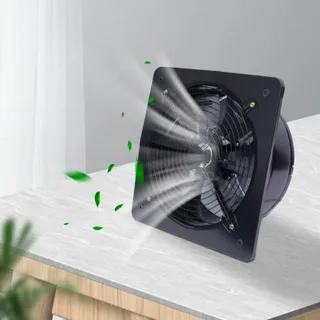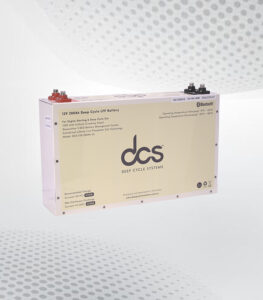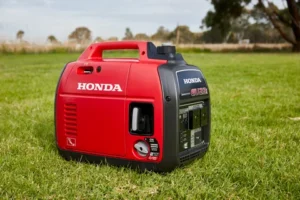Indoor air quality has become a significant concern in contemporary living environments. Poor air quality can lead to various health issues, including respiratory problems, allergies, and general discomfort. A ventilation fan is valuable in enhancing indoor air quality by promoting better air circulation and reducing pollutants. This blog explores the multifaceted benefits of ventilation-fans, highlighting their importance in creating a healthier indoor environment.
Understanding the Importance of Indoor Air Quality
Indoor air quality encompasses the condition of the air within buildings and structures, influenced by factors such as ventilation, humidity, and the presence of pollutants. Common indoor contaminants include dust, mould, pollen, and volatile organic compounds (VOCs) emitted from various household products. Maintaining high indoor air quality is essential in its impact on health and well-being.
Exposure to pollutants can cause respiratory issues, allergies, and other health problems, particularly among vulnerable groups like children, the elderly, and those with pre-existing health conditions. High-quality indoor air enhances overall comfort and improves productivity and cognitive function. Understanding these factors underscores the need for effective measures to maintain and improve indoor air quality.
How Ventilation-Fans Improve Air Quality
Ventilation-fans significantly enhance indoor air quality by promoting the exchange of indoor and outdoor air. These fans draw fresh air from outside while expelling stale, contaminated air from within the building. This process helps to dilute the concentration of indoor pollutants such as dust, pet dander, and volatile organic compounds (VOCs). By maintaining a continuous flow of fresh air, ventilation-fans also aid in regulating indoor humidity levels, which is crucial in preventing the growth of mould and mildew.
Additionally, proper air circulation achieved through ventilation-fans can reduce the accumulation of airborne allergens, thereby minimising the risk of respiratory issues and allergic reactions. This mechanism ensures that indoor environments remain more breathable and healthier for occupants, providing a steady supply of fresh air and mitigating the effects of indoor pollution.
Different Types of Ventilation-Fans and Their Uses
Various types of ventilation-fans are designed to address specific indoor air quality needs. Extractor fans, typically found in kitchens and bathrooms, are crucial for expelling moisture, cooking fumes, and odours, thereby mitigating the accumulation of harmful pollutants. Ceiling fans, on the other hand, enhance air circulation and create a cooling effect, which can reduce the reliance on air conditioning systems.
Inline fans are often used in duct systems to boost air movement in larger or multi-room spaces, ensuring consistent airflow. Whole-house ventilation systems exchange indoor air with outdoor air across the home, maintaining a steady influx of fresh air. Each fan type serves a distinct purpose, collectively contributing to improved indoor air quality by addressing various sources of indoor pollutants and enhancing overall air movement.
Proper Placement of Ventilation-Fans for Maximum Effectiveness
Strategic placement of ventilation-fans is essential for optimising their performance in enhancing indoor air quality. In kitchens, extract fans should ideally be installed near cooking appliances to effectively remove heat, smoke, and odours generated during food preparation.
For bathrooms, positioning fans near the shower or bath is crucial to swiftly eliminate steam and reduce humidity levels, thus preventing mould and mildew growth. Ceiling fans should be centrally located in rooms to ensure uniform air distribution and balanced airflow.
Additionally, inline fans can be installed within duct systems for larger spaces or multi-room areas to boost air movement and maintain consistent ventilation throughout. Ensuring that fans are placed in positions where they can directly tackle sources of indoor pollutants will maximise their effectiveness in maintaining a fresh and healthy indoor environment.
Key Features to Look For When Choosing a Ventilation Fan
When selecting a ventilation-fan, several key features should be considered to ensure it meets your needs effectively. Here are some essential aspects to look for:
Airflow Capacity
The airflow capacity, measured in cubic feet per minute (CFM), indicates how much air the fan can move. Choose a ventilation-fan with a CFM rating suitable for the size of the room or space. Larger areas require fans with higher CFM ratings to ensure adequate air exchange.
Noise Level
Noise levels are an essential factor, especially in residential settings. Fans are rated in sones, with lower sone ratings indicating quieter operation. Select a ventilation fan with a low sone rating if noise is a concern, ensuring a peaceful and comfortable environment.
Energy Efficiency
Energy-efficient models help reduce electricity consumption and operating costs. Look for a ventilation-fan with an ENERGY STAR® certification or other energy-saving features. These fans use less power while providing adequate ventilation, making them an environmentally friendly choice.
Installation Type
Ventilation-fans come in various installation types, including ceiling-mounted, wall-mounted, and inline. Consider the installation location and the kind of ventilation-fan that best suits your space. Ceiling-mounted fans are used daily in bathrooms, while inline fans are ideal for larger duct systems.
Additional Features
Modern ventilation-fans often have extra features like built-in humidity sensors, timers, or integrated lighting. These features enhance functionality and convenience. For example, a fan with a humidity sensor can automatically adjust operation based on moisture levels, improving efficiency and comfort.
Installation Tips for DIY Enthusiasts and Professionals
Installation of a ventilation-fan requires careful preparation and adherence to specific steps to ensure efficiency and safety. The installation space must be accurately measured to select a fan that fits correctly. For exhaust fans, it is crucial to establish a direct air exit path, which might necessitate additional ductwork. Adhering to the manufacturer’s guidelines is imperative for safety and optimal performance. Proper electrical wiring is another critical aspect, demanding secure connections to prevent potential hazards.
Sealing gaps around the fan can enhance its functionality by stopping air leaks. It is also advisable to use appropriate mounting hardware to ensure stability and reduce vibrations. Ensuring the fan is level and securely fastened minimises operational noise and maximises efficiency. Consulting a professional may be wise to avoid complications for those unfamiliar with electrical work. Regular checks post-installation can identify any issues early, ensuring the fan operates as intended.
Regular Maintenance Practices to Keep Ventilation-Fans Efficient
Routine maintenance is essential for ensuring ventilation-fans operate at peak efficiency. Regularly cleaning fan blades and filters is crucial, as accumulated dust and debris can obstruct airflow and reduce the fan’s effectiveness. Periodically inspecting ductwork for any blockages is necessary for exhaust fans, as clear ducts are vital for proper ventilation.
Additionally, ensuring vents remain unobstructed promotes optimal air exchange. Attention to the fan’s electrical components is also critical. Checking electrical connections and the motor for wear or damage can help identify potential issues early, preventing more significant problems.
Lubricating moving parts, if applicable, can enhance the fan’s performance and longevity. Sealing any gaps around the fan installation is another vital maintenance practice. This prevents air leaks, ensuring the fan operates efficiently without losing effectiveness. Ensuring the blades are balanced for ceiling fans can minimise noise and vibrations, contributing to a quieter and more pleasant environment.
Energy Efficiency and Ventilation-Fans
Energy efficiency plays a pivotal role in the selection and utilisation of ventilation-fans. Modern advancements in fan technology have led to the development of energy-efficient models that optimise performance while consuming less electricity. These fans are engineered with energy-saving motors and aerodynamic blade designs, contributing to lower power usage without compromising air circulation efficacy.
The integration of energy-efficient ventilation-fans within homes and workplaces offers multiple benefits. Reduced electricity consumption translates to lower utility bills, making these fans a cost-effective choice over the long term. Furthermore, energy-efficient fans help decrease the overall carbon footprint, aligning with broader environmental sustainability goals. In addition to inherent energy-saving features, certain ventilation-fans come equipped with programmable timers and adjustable speed settings.
These functionalities allow for tailored operation, ensuring that the fan runs only when necessary, and preventing unnecessary energy use. Humidity sensors in some models can automatically adjust the fan’s activity based on moisture levels, further enhancing efficiency. Smart technology integration is another avenue through which energy efficiency is maximised. By connecting ventilation-fans to smart home systems, users can monitor and control fan operation remotely, optimising usage patterns to align with specific needs and environmental conditions.
Integrating Ventilation-Fans with Smart Home Systems
Integrating ventilation-fans with smart home systems offers significant advancements in managing indoor air quality. Smart ventilation-fans are designed to work with various sensors, allowing them to respond dynamically to changes in air quality, temperature, and humidity. These fans can adjust their speed and operational settings based on real-time data, ensuring optimal air circulation and energy efficiency.
Advanced smart home systems enable remote control and monitoring of ventilation-fans through dedicated apps or centralised home automation hubs. This feature allows users to customise ventilation schedules, set up automated routines, and receive alerts when maintenance is required. Voice control compatibility with virtual assistants provides a hands-free experience, enhancing convenience.
Integration with smart home ecosystems also facilitates synchronisation with other connected devices. For example, ventilation-fans can work in tandem with air purifiers, heating and cooling systems, and lighting to create a cohesive and efficient indoor environment. This interconnected approach ensures that air quality management is seamlessly integrated into the broader smart home strategy, promoting health and comfort.
Conclusion
Incorporating a ventilation-fan into indoor spaces can significantly enhance air quality and overall comfort. Efficiently expelling stale air and introducing fresh air addresses common issues like moisture buildup and odours. Whether for residential or commercial use, selecting the right ventilation-fan and maintaining it regularly will contribute to a healthier and more pleasant environment, benefiting both occupants and energy efficiency.
FAQs
What is a ventilation-fan used for?
A ventilation-fan is designed to improve air circulation in enclosed spaces. It helps to expel stale air, moisture, and odours, creating a healthier and more comfortable environment. By enhancing airflow, a ventilation-fan can also reduce the risk of mold and mildew growth.
How does a ventilation fan work?
A ventilation fan operates by drawing air from a room or space and expelling it outside. This process helps to replace stale or contaminated air with fresh air from outside. The fan’s motor powers the blades, which move the air and create a flow that promotes better ventilation.
What types of ventilation-fans are available?
Several types of ventilation-fans are available, including ceiling-mounted, wall-mounted, and inline models. Each type is suited to different applications and installation locations. For example, ceiling-mounted fans are ideal for bathrooms, while inline fans are often used in ducts for larger spaces.
How do you choose the right ventilation-fan for your needs?
To choose the right ventilation-fan, consider the space size, the required ventilation level, and the specific application. Selecting a fan with the appropriate capacity to ensure adequate air movement. Consulting with a professional can also help determine the best option for a particular situation.
How often should a ventilation-fan be cleaned?
A ventilation-fan should be cleaned regularly to ensure optimal performance. It is recommended that the fan blades and vents be checked and cleaned every few months. Accumulated dust and debris can impair the fan’s efficiency and potentially affect indoor air quality.
| Related Business Listings |
| Contact Directory |
| Local Business Profiles |




